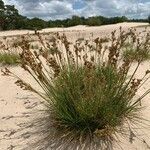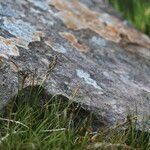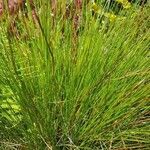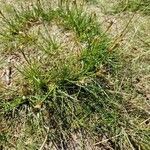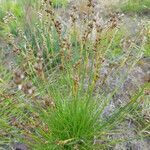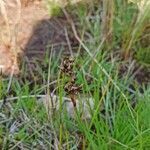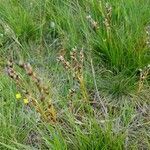Perennial, very dense coarse tufts (15)-25-35 cm high; roots thick, spreading. Stems stout, stiffly erect. Leaves many, usually all basal, c. ½ length of stems, wiry, very stiff, channelled, abruptly reflexed from just above very wide sheath. Inflorescence 2-8-(12) cm long, strict, with few unequal branches. Flowers in clusters of 2-3-(6) at ends of branches. Tepals 5-6 mm long, ± equal, dark chestnut-brown even in young flowers, tips subulate to acute. Stamens 6, Capsule c. 5 mm long, slightly < tepals, obovate, very shortly mucronate, yellow-brown to dark chestnut-brown.
